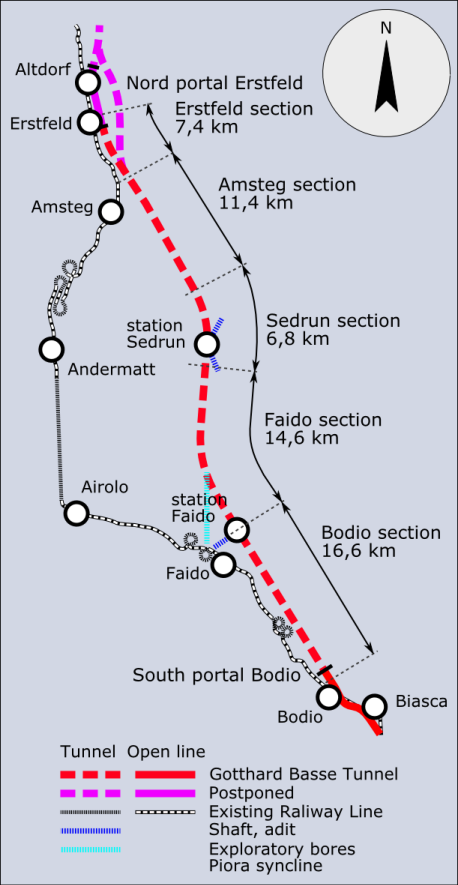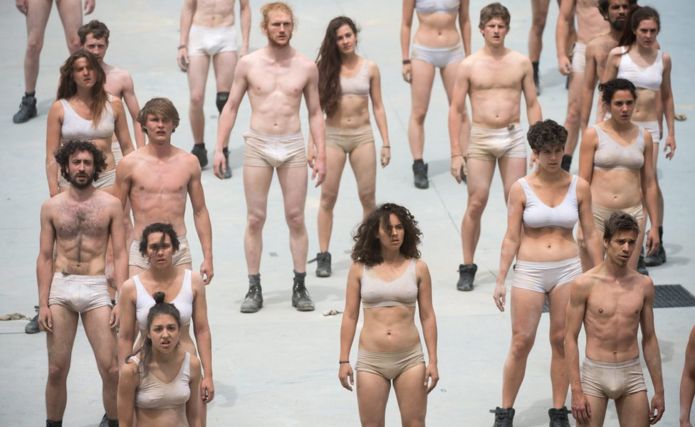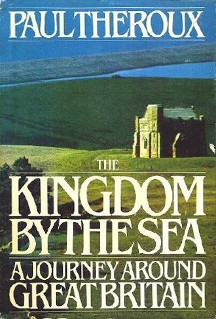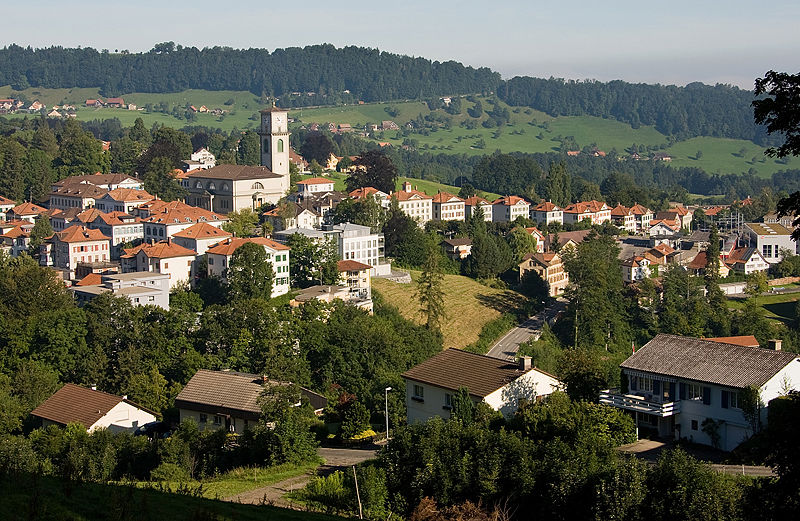Landschlacht, Switzerland, 22 August 2016
As the few but faithful regular readers of this blog may recall, I am in a marriage wherein my wife is away four days out of seven working in Zürich bringing sick children there the love and professionalism by which she is already known in her particular circles.
So, while she is away with the car I am forced to rely on public transportation when necessity demands I leave this tiny hamlet for purposes other than sleeping.
Today, suffering from extreme toothache, I must once again calculate in my mind the travel time required to reach my destination, in this case a dentist’s chair in Konstanz.
Happily there are moments when taking a train is not connected with work or other necessities, but instead is an adventure and genuine pleasure to do so.
In moments of my recent past I recall the joy I have felt when riding the rails to some undiscovered place as part of another spontaneous exploration.
And there are “before I kick the bucket” travel destinations I would like to visit, which involve boarding a train and seeking out stations that beckon with promise and excitement.
I have even already mapped out in my mind a round-the-world trip that would have me take the train from Paris to Istanbul, then on to Moscow, the Trans-Siberian to Vladivostock, a flight to Alaska, then buses and trains south to British Columbia and down to South America, fly to South Africa then buses and trains back to Europe.

It is an imperfect and imprecise plan, but then most grand adventures are.
Here in Switzerland, Swiss chests are swollen with pride not only because Swiss athletes have won medals in the Rio Olympics, but because two months ago, on 1 June 2016, the Gotthard Base Tunnel (Gotthard Basistunnel / Tunnel de base du Saint-Gotthard / Galleria di base del San Gottardo / Tunnel da basa dal Son Gottard in the four official Swiss languages of German, French, Italian and Romansh) was officially opened with dignitaries from across Europe extolling its virtues.

And I might visit this tunnel one day, for as much as it pains me to give the Swiss praise – they praise themselves already too jingoistically as it is – I have to acknowledge that Swiss engineers have truly accomplished something noteworthy here.
With a route length of 57 km (35 miles) and a total of 151 km (94 miles) of tunnels, shafts and passages, it is the world’s longest and deepest traffic tunnel and the first, flat, low level route through the Alps.
The GBT’s depth is approximately 2,300 metres (7,500 feet), which is compareable to that of the deepest mines on Earth.
Without ventilation, the temperature inside the mountain reaches 46 degrees Celsius (115 degrees Fahrenheit).
The main purpose of the GBT is to increase local transport capacity through the Alpine barrier, especially for freight, notably on the Rotterdam-Basel-Genoa corridor, and more particularly to shift frieght volumes from trucks to freight trains.
Now this is significant, because not only does the GBT reduce the danger of fatal road crashes involving trucks, but it also reduces the environmental damage caused by these trucks.
The GBT bypasses the Gotthardbahn, a winding mountain route opened in 1882 across the Saint Gotthard Massif, which has been operating at full capacity, and establishes a direct route which can be used by both high speed rail and heavy freight trains.
The GBT consists of two single track tunnels, connecting Erstfeld in Canton Uri with Bodio in Canton Ticino, and passing underneath Sedrun in Canton Graubünden.

Passenger trains are now able to travel up to 250 km/h (155 mph) through the GBT, reducing travel times for transalpine train journeys by almost an hour.
And this saving of time and the environment cost the Swiss only 14 billion Swiss francs and nine people´s lives (only one of whom were Swiss).
But these costs in taxpayers´ hard-earned incomes and human life have all been forgiven and forgotten, for a commemoration ceremony – led by a Catholic vicar general, an Evangelical vicar, a Jewish rabbi and a Muslim imam – absolves all guilt… and the massive inauguration – with hundreds of Swiss citizens chosen by lot and dozens of dignitaries, including German Chancellor Angela Merkel, French President Francois Hollande and Austrian Chancellor Christian Kern, and the resulting publicity – absolves all remorse.
Throw in dancers and acrobats, singers and musicians, print and media, all united in harmonious orgasm in a celebration of Alpine culture and history…and you have yourselves the making of one hell of a party.

Now I recognize the merit of building a 57-km long tunnel but I find myself unmoved by this hullabaloo, for though the GBT might get me from Zürich to Milano a wee bit earlier, I am robbed of seeing much along the way if I am travelling through an underground passage.
For in reaching the destination quicker, we lose the quality of the journey.
I feel the same way about the Channel Tunnel, having crossed the Channel by boat and through the “Chunnel”, I gained time on the train and felt enchantment on the boat.

The trainspotter in me, the rail enthusiast within, does not celebrate the GBT.
Now, as suggested above and in previous blog posts, I have travelled by train in Britain.

I have ridden the rails to Cornwall with my wife and have visited friends in Southampton and Oxford and London by train and thoroughly loved riding old steam trains with a former girlfriend when we vacationed in Wales.
For even though rail travel in Britain is expensive, trains are still generally more comfortable than coaches.
Though British trains are still prone to the occasional delay or cancellation, at least most still run close to their scheduled times.
Though about 20 different companies operate train services in Britain and tracks and stations are operated by yet another company, causing confusion for many passengers, information and ticket services are increasingly centralised.
But the days of the best British trains – the slow, sweet branch lines – endangered in the days when train travel writer Paul Theroux in the early 80s wrote The Kingdom by the Sea: A Journey around the Coast of Great Britain, may be drawing to a close.

“Twelve groups of companies have made applications to run rail franchises until 2020.
Among them is the East Japan Railway Company (JR East) who has made a bid to run the West Midlands franchise, operated at present by London Midland.
JR East is the operator of Japan’s high-speed bullet trains and manages the 742-mile high-speed network north of Tokyo.” (Times, 8 April 2016)
The Shinkansen, falsely translated by Westerners to mean “bullet train” from the Japanese dangan ressha, the nickname given to the high-speed project in the 1930s, actually refers to the earthquake-and-typhoon-proof track.

There are several types of Shinkasen train, including the 0 series – the front of which actually does resemble a bullet – and the 700 series – the front cab resembling a duck-billed platypus.
These trains reach speeds of up to 300 km per hour, and on average arrive within 6 seconds of their scheduled time.
The Swiss are the most frequent train users in Europe and there is no denying that its network is high quality, comfortable, efficient and scenic.
Swiss Federal Railways – or Schweizerische Bundesbahnen (SBB), Chemins de fer fédéraux suisses (CFF), Ferrovie federal svizzere (FFS) – retains a monopoly on most of the network, but there are some routes, especially alpine lines, which are operated by the companies whch constructed them often a century or more ago.

Still in comparison with other nations, arrival of the railway in Switzerland was relatively late, because each of the country´s Cantons had a say over the routes chosen and they didn´t always agree.
Only after the enactment of the Federal Railways Act of 1852 did the possibility of a nation drawn together by a cohesive rail network become possible.
Zürich´s Main Station (Hauptbahnhof) is the largest railway station in Switzerland.

3,000 trains, carrying over 350,000 passengers, arrive and depart daily on 30 tracks.
The Hauptbahnhof is one of Switzerland´s oldest.
Outside the neo-Renaissance station is a fountain to the memory of Swiss politician and railway entrepreneur Alfred Escher (1819 – 1882) who initiated the construction of the Gotthard Railway and was the founder of Credit Suisse.

(See The Haa Bay and Needle Park of this blog.)
The GBT doesn´t recall the name of Alfred Escher but a Catholic shrine to Saint Barbara, the patron saint of miners, stands inside the tunnel as a memorial to those who built the GBT.
I use the train almost every day, travelling to Konstanz and Zürich for shopping, travelling to St. Gallen, Amriswil, Herisau, Neuhaus and Winterthur for work.
And as much as I enjoy travelling by train, these routes are not my favourite, for I love more intensely the slow, sweet trains, trams and cable cars that climb and descend the hills and mountains of this alpine land.
In a former post, Along the Comedy Circuit, I described how one could travel from the Lake of Constance and the harbour of Rorschach, ride a boat along the lakeshore and up the Rhine River to Rheineck, take a gauge train up the hills to Walzenhausen, walk the Witzweg (Joke Trail) to Heiden, then take another gauge train from Heiden down the hills to Rorschach.
I mentioned how I had made this excursion with my wife.
But as much as I adore and respect my wife, I am very much like Paul Theroux in that I find travel more satisfying, more educational, when I am on my own.
When you travel with someone else your world and your perspective of it is reduced to seeing only one another rather than your isolation compelling you to interact with the world.
I mentioned in A to Z: Adam to Zelg how I taught a family in the village of Zelg in Canton Appenzell.
Zelg is a tiny town in the municipality of Wolfhalden and is reachable by bus from either Heiden or Rheineck and is midpoint by car between Walzenhausen and Rheineck.
On two occasions during my contract with the family Frei I had the opportunity to take these two mountain railways of Rheineck-Walzenhausen (the RhW) and Rorschach-Heiden (the RHB) on my own.
The RhW (Bergbahn Rheineck-Walzenhausen) is a 1.9 km (1.2 mile) long rack railway, that links Rheineck, Canton St. Gallen (SG), with Walzenhausen, Canton Appenzell Ausserrhoden (AR), in operation since 1896.

Rheineck (Rhine corner) is a Swiss municipality on the Austrian border, where the Rhine River meets and flows into the Bodensee (Lake of Constance).

Rheineck is an old place – by white Canadian, written historical, standards – as it has been around since 1163 when it was known as Castellum Rinegge (Rheineck Castle) – and it is filled with many old structures in its Altstadt.
Rheineck was home to Swiss writer William Wolfensberger (1889 – 1918) and painter Heinrich Herzig (1887 – 1964).
Walzenhausen is a village and a health resort and a starting point of the 8-km long Witzweg walking trail to Heiden.
The RhW starts from platform 1 of Rheineck`s railway station, parallels the SBB’s St. Margrethen – Rorschach railway line for 600 metres (2,000 feet), then makes a sharp right and crosses the highway to reach the Ruderbach stop.
Here the line joins the funicular rack operation and begins to climb at a steep gradient (25%)(272 m / 892 ft) in a straight line to Walzenhausen, passing first through a 315 metre (1,033 foot) long tunnel and then across a 153 metre (502 foot) long iron bridge over the Hexenkirchlitobel (little witches´ church ravine), to finally enter a 70 metre (230 foot) long tunnel under Walzenhausen’s spa house.
The entire journey on the RhW’s single four-wheeled railcar takes only 9 minutes, but despite the discomfort of the car´s wooden benches, one wants to ride the RhW again and again.
The RHB (Rorschach Heiden Bahn) is a standard gauge mountain rack railway, a 7 km (4.3 mile) route that links Rorschach, Canton St. Gallen, with Heiden, Canton Appenzell Ausserrhoden, in operation since 1871, and is a 19-minute journey.

Personally I don´t find the RHB as exciting as the RhW, but the places it connects are far more interesting than Rheineck and Walzenhausen for the visiting tourist.
Rorschach, on the south side of the Bodensee, is a very interesting place to visit and not just for its amazing location on the Lake.
One can reach Rorschach by train from either St. Gallen to the south or Romanshorn to the west as well as the RHB up to Heiden.
Highway A1 to the south leads to St. Gallen and St. Margrethen.
Rorschach has a harbour served by passenger ferries that travel to towns on the Swiss, Austrian and German sides of the Lake as well as upstream along the Rhine.

A number of trails begin in Rorschach: the Via Jacobi (one of the routes of the Way of St. James (Jakobsweg) that one can follow to Einsiedeln, Geneva and Santiago de la Compostela in faroff Spain), the Alpenpanoramaweg to Geneva and the Rheintaler Höhenweg (Rhine valley elevated trail) to Sargans.
For the tourist, one can visit the old granary and the Benedictine abbey of Mariaberg, the promenade along the Lake, the St. James Fountain (the starting point of the road to Spain), the bathing hut directly on the Lake, the aviation museum and Hundertwasser House in nearby Altenrhein, as well as the castles of St. Anna, Wartensee, Sulzberg and Wartegg.
Rorschach was the birthplace of Barock fresco painter Johann Melchior Eggmann (1711 – 1756), film actor and 1st Oscar winner Emil Jannings (1884 – 1950), photographer/painter/publisher Ernst Scheidegger (1923 – 2016), Bruno Stanek, space expert and TV moderator (born 1943), and professional racing car driver Neel Jani (born 1983).
(The famous Rorschach inkblot test is named after Hermann Rorschach (1884 – 1922), its Zürich inventor, not the town of Rorschach itself.)
Heiden is also noteworthy as a spa resort, as the birthplace of renowned scientist Hugo Thiemann (1917 – 20112) and footballer Davide Chiumiento (born 1984), and the final residence and resting place of Red Cross founder/Nobel Peace Prize winner Henri Dunant (1828 – 1910).

The Henri Dunant Museum is very interesting and well worth a visit.
The RHB is a very comfortable train that ascends 400 metres from Rorschach Main Station (not to be confused with the stations Rorschach Stadt and Rorschach Hafen) and stops upon request at Seebleiche (Pale Lake), Sandbüchel (sandy beeches), Wartensee (waiting lake), Wienacht-Tobel (like night ravine) and Schwendi bei Heiden.
The RHB is a very popular line with both local and international tourists and often the RHB will employ classic train wagons and old steam engines to attract more visitors.
I find myself drawn more towards the RhW and the RHB than the GBT because the old mountain railways embrace the mountains they climb rather than burrow through them.
The RhW and the RHB are symbols of harmony with heritage and nature rather than an avoidance of the environment in the pursuit of speed, in the name of progress.
As I am forced to concede that I do take the fastest trains to work to save time and reach my destination, my heart will always belong to the slow romance of the mountain railways.

